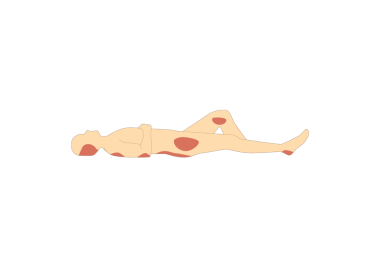
Pressure injuries: Pressure injury risk assessment and prevention (3/4)
Course Overview:
Pressure injury is a global health issue, with its prevalence in healthcare settings ranging from 0% to 72.5%, depending on geographical location and the type of clinical setting.
Prevalence and incident rates are generally higher in those special patient populations who are at elevated risk, which include patients in critical care, those undergoing palliative care, individuals with spinal cord injuries, older people, and neonates and children.
Pressure injuries can have a major impact on the individual from complications which may include pain, infection, decreased function, increased costs from hospitalisations, social isolation, and depression; potentially resulting in compromised quality of life and in death.
In addition, considerable financial burden is imposed on health care systems.
Despite opinions that there has been a global decline in pressure injury prevalence in general acute care over the last two decades, some studies have found an increase in hospital stays of approximately 4.3 days for patients with pressure injuries.
A data analysis of admitted patients over the 2018-2019 period, conducted by the Australian Commission on Safety and Quality in Health Care, identified that almost 2,700 public hospital separations involved hospital-acquired pressure injuries.
This represented an approximate cost on average of $56,000 per separation for these preventable conditions
In 2019, the third edition of the Prevention and Treatment of Pressure Injuries: Clinical practice guideline. The International Guideline was released by the European Pressure Ulcer Advisory Panel, National Pressure Injury Advisory Panel and Pan Pacific Pressure Injury Alliance.
This resource includes evidence-based recommendations that are intended for use worldwide by nurses, midwives, and all other health professionals, regardless of clinical discipline or clinical setting, for the assessment, diagnosis, prevention, and treatment of pressure injuries
This module is estimated to be 4 hours of continuing professional development. (CPD). Another, shorter module on pressure injury risk assessment, prevention, classification, and management is available for carers and assistants in nursing.
Target Audience
Nurses, midwives and allied health
Business Outcomes
The course is directly related to the Australian National Safety and Quality Health Service (NSQHS) Standards as part of Standard Five: Comprehensive Care.
It directly relates to the Aged Care Quality Standards, Standard Three, Personal Care and Clinical Care.
Specifically the Australian Commission on Quality and Safety in Health Care has stated that:
Health service organisations implementing the National Safety and Quality Health Service (NSQHS) Standards are required to establish systems and processes for pressure injury prevention and wound management that are consistent with best-practice guidelines.







